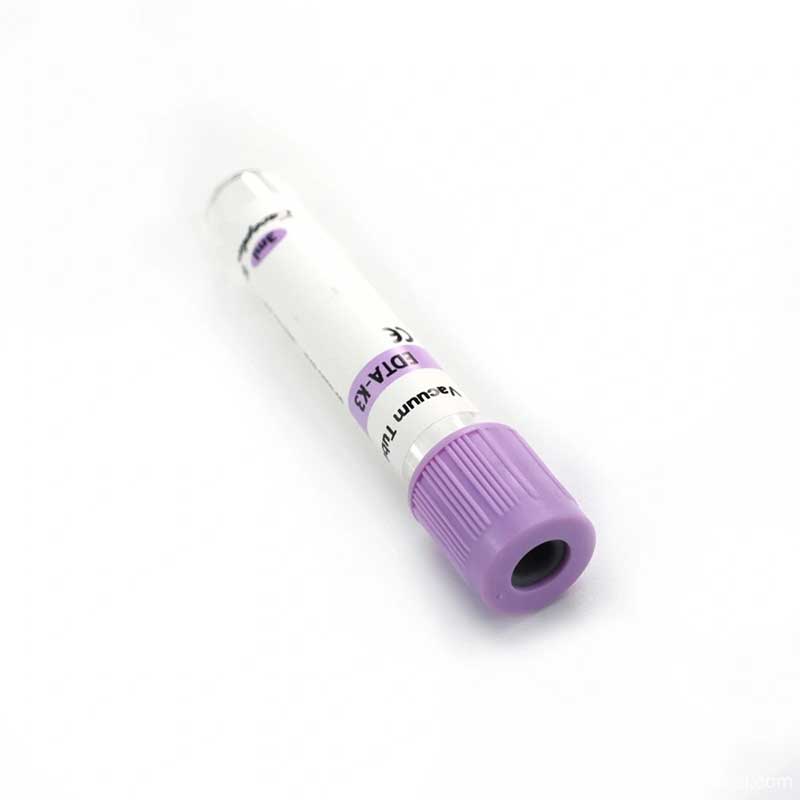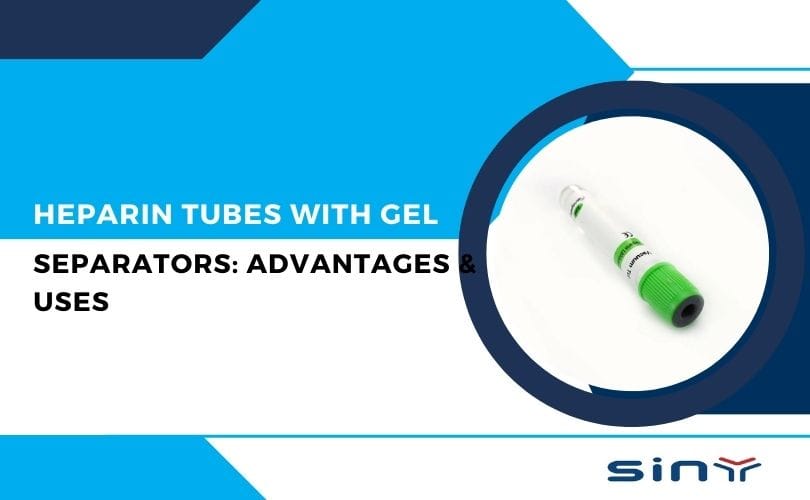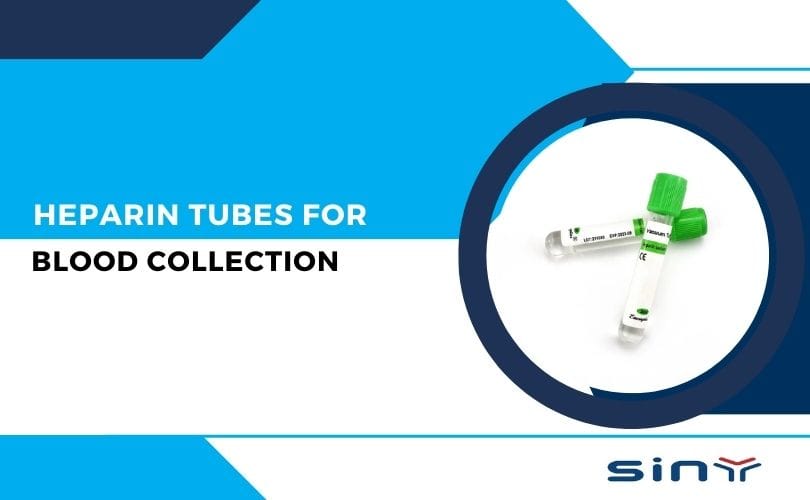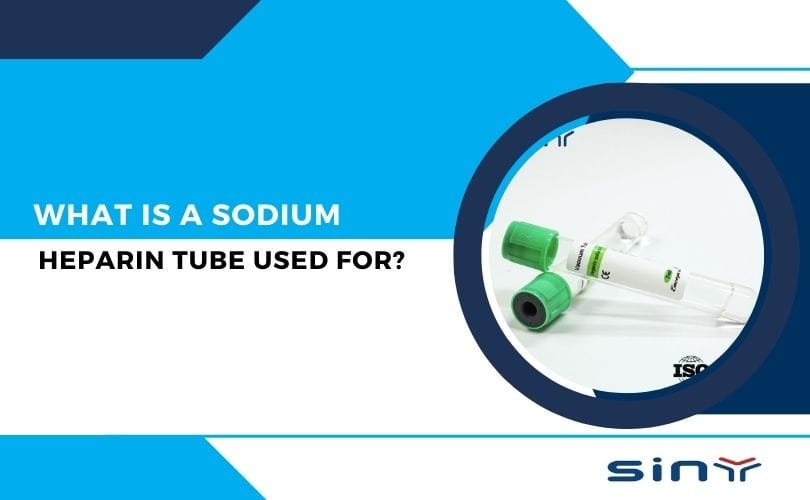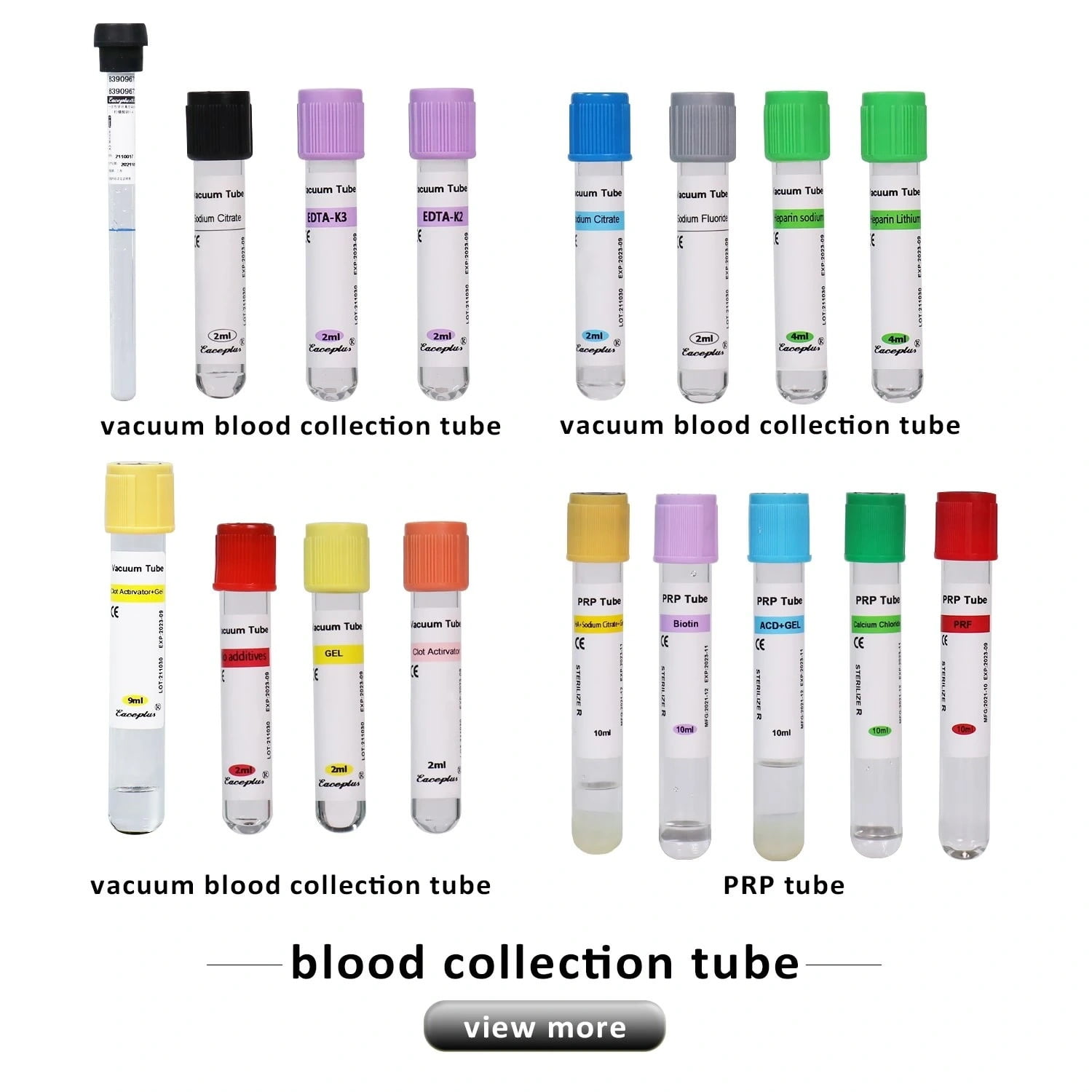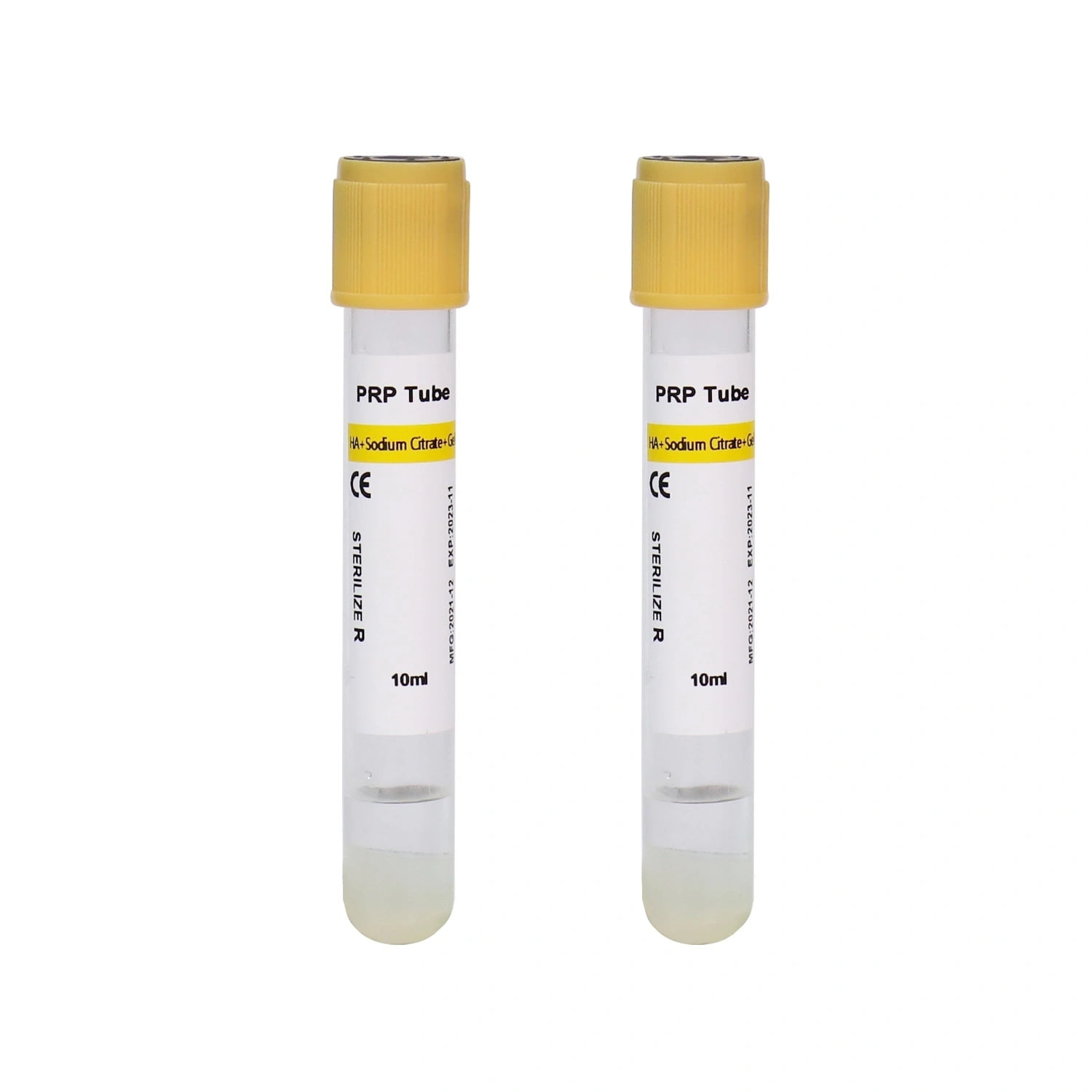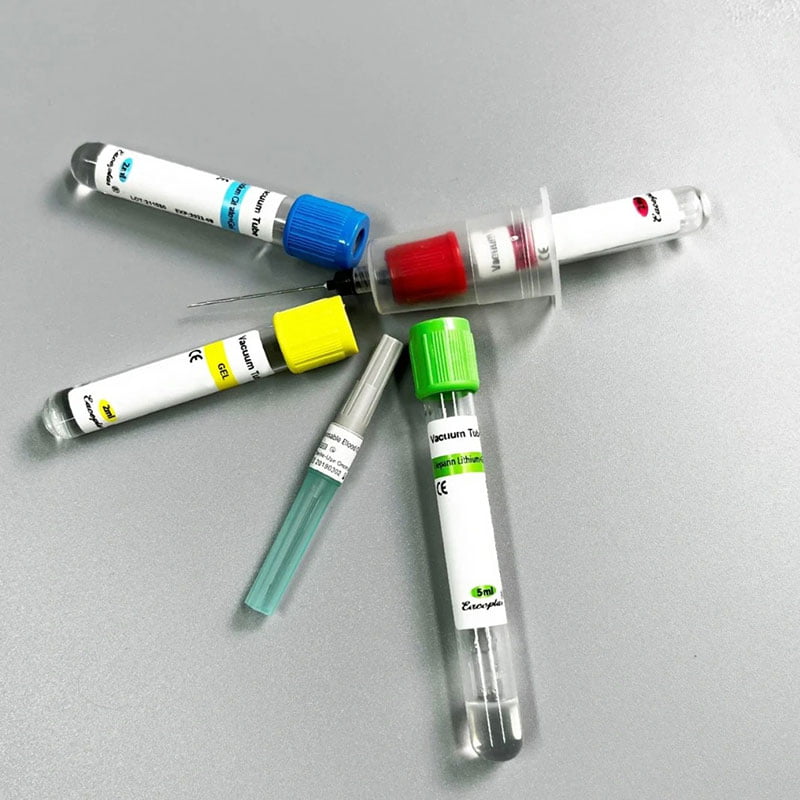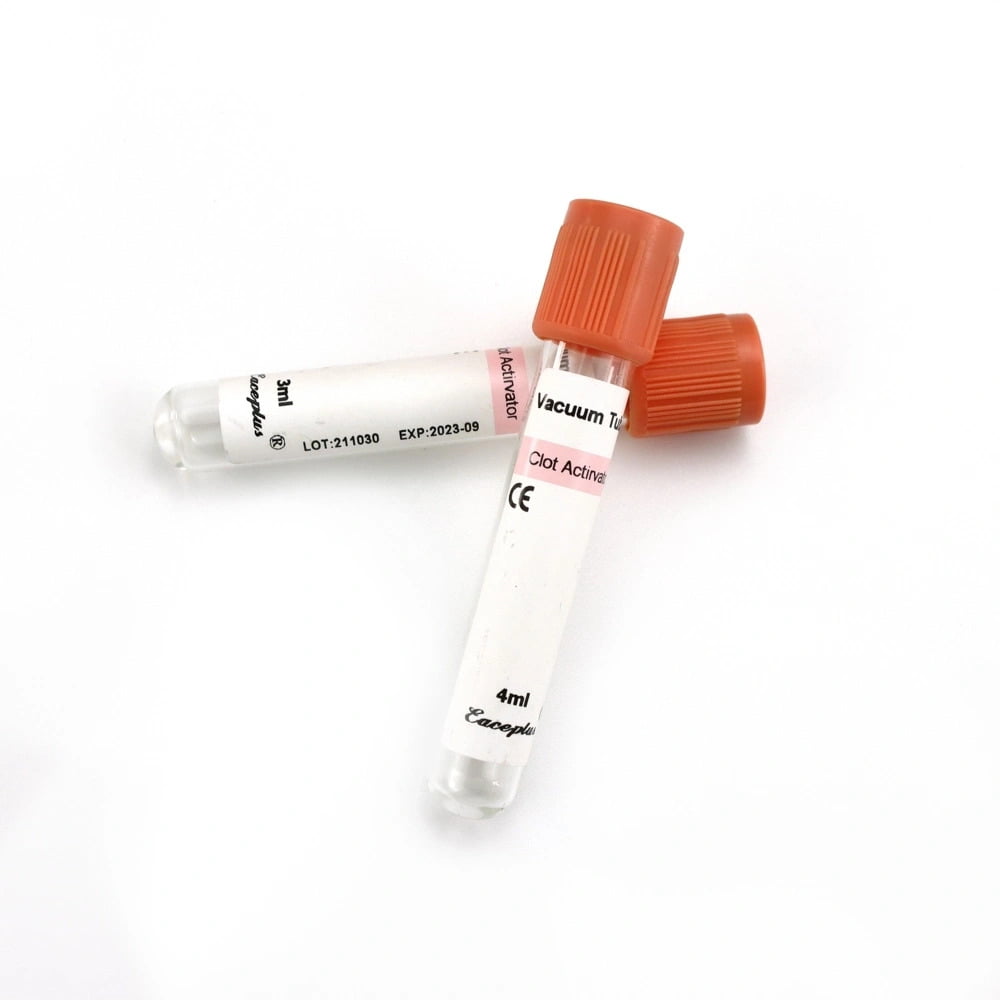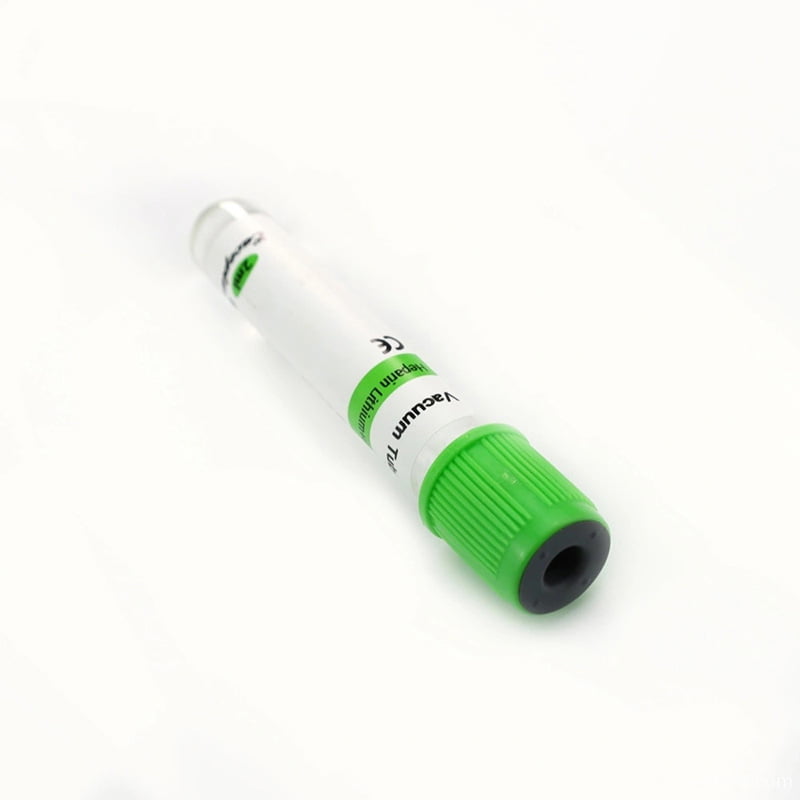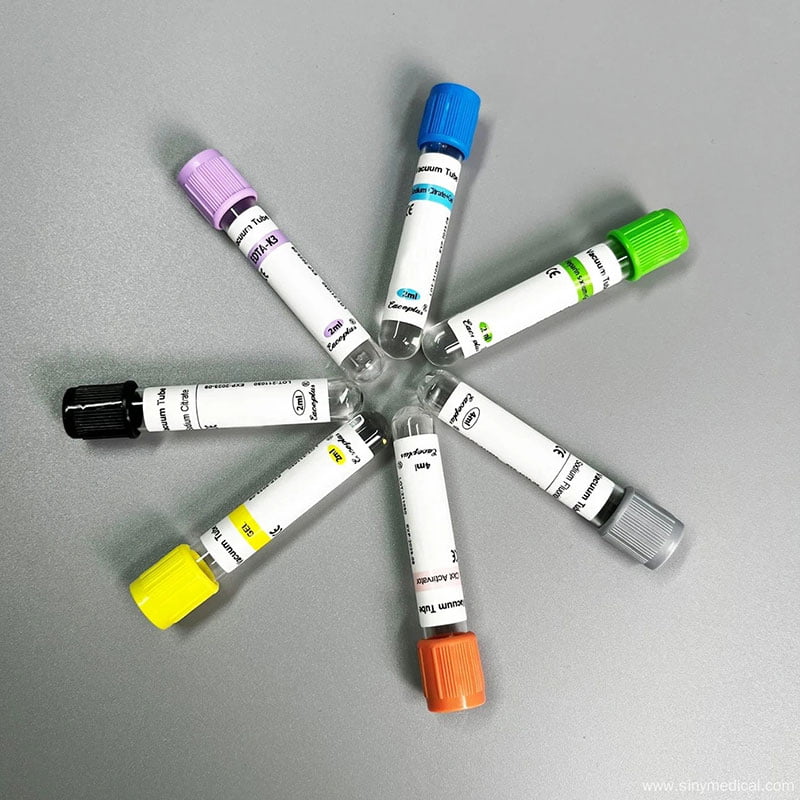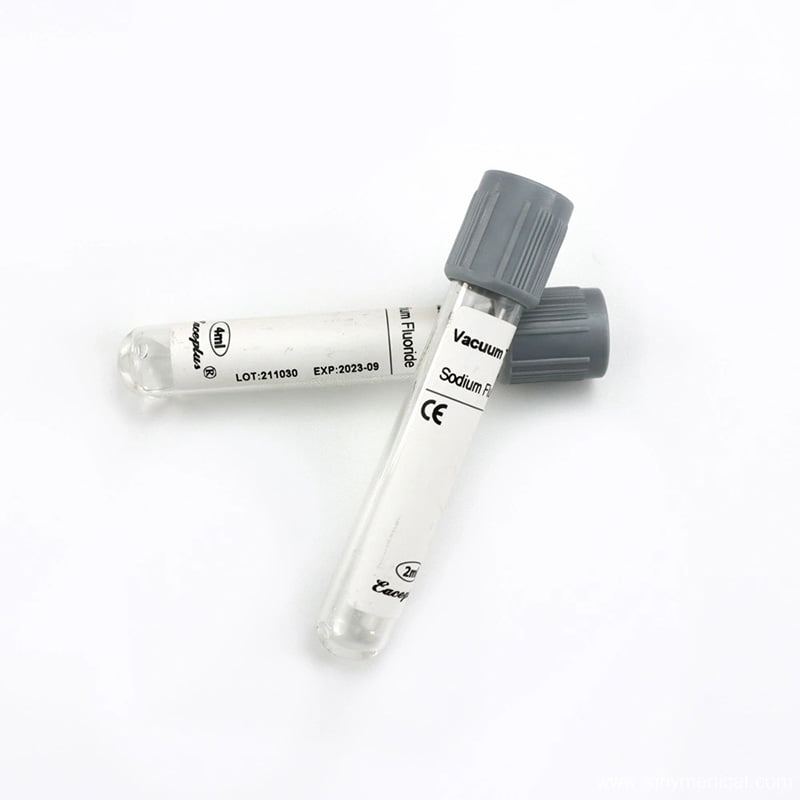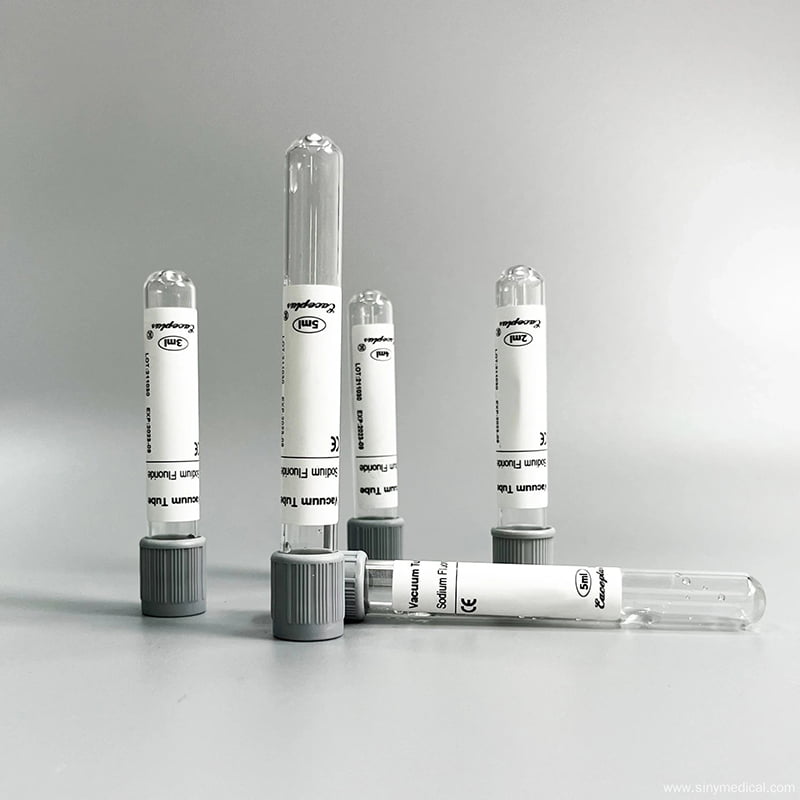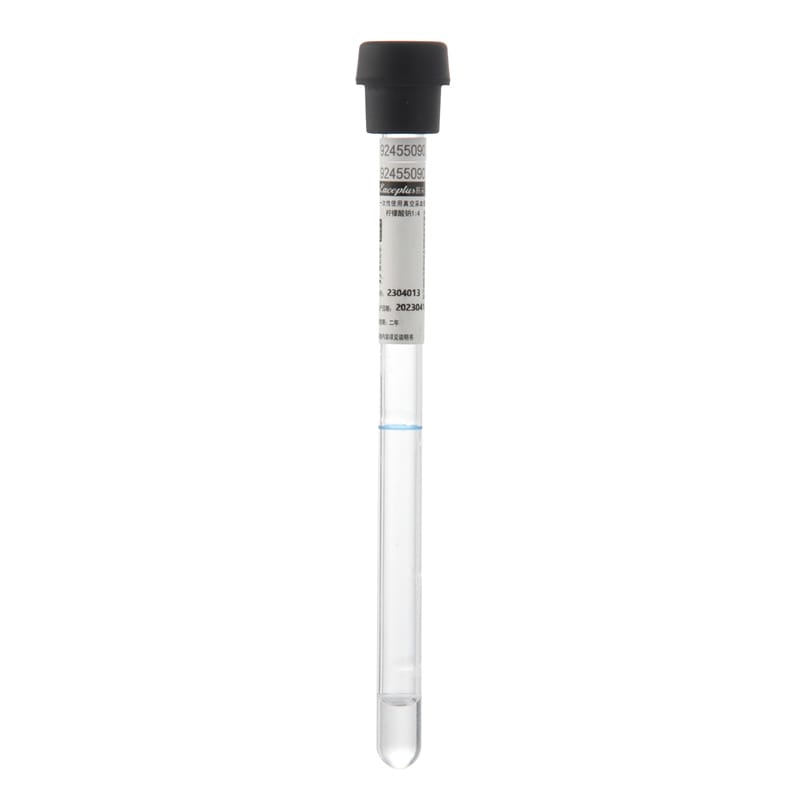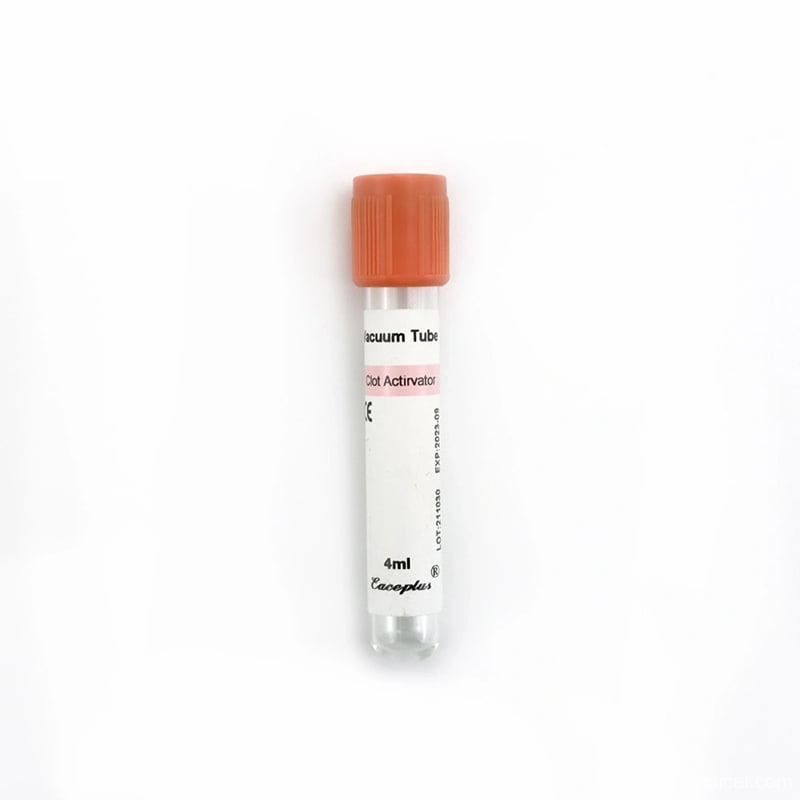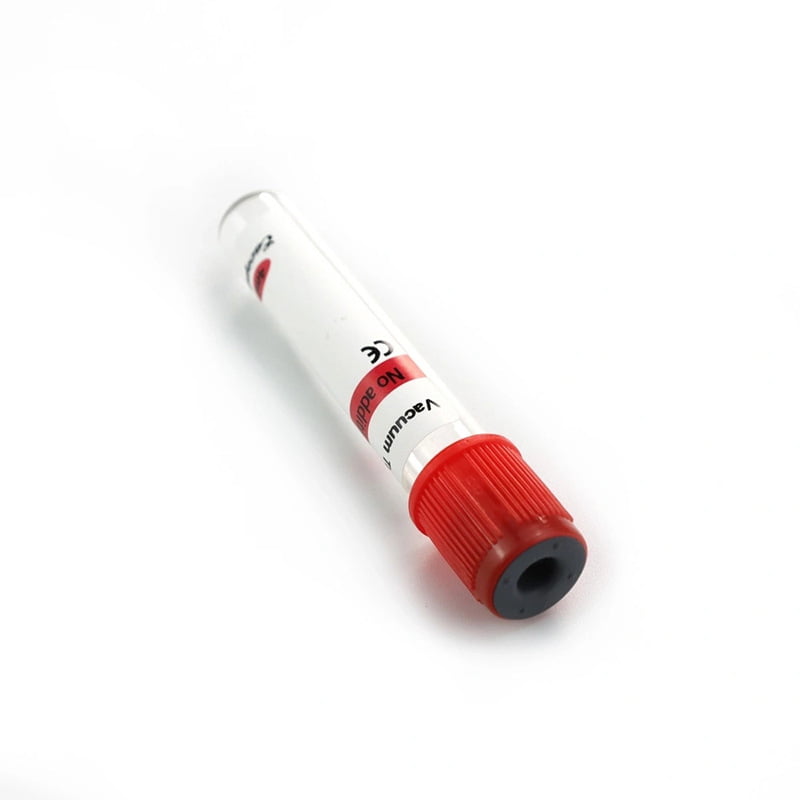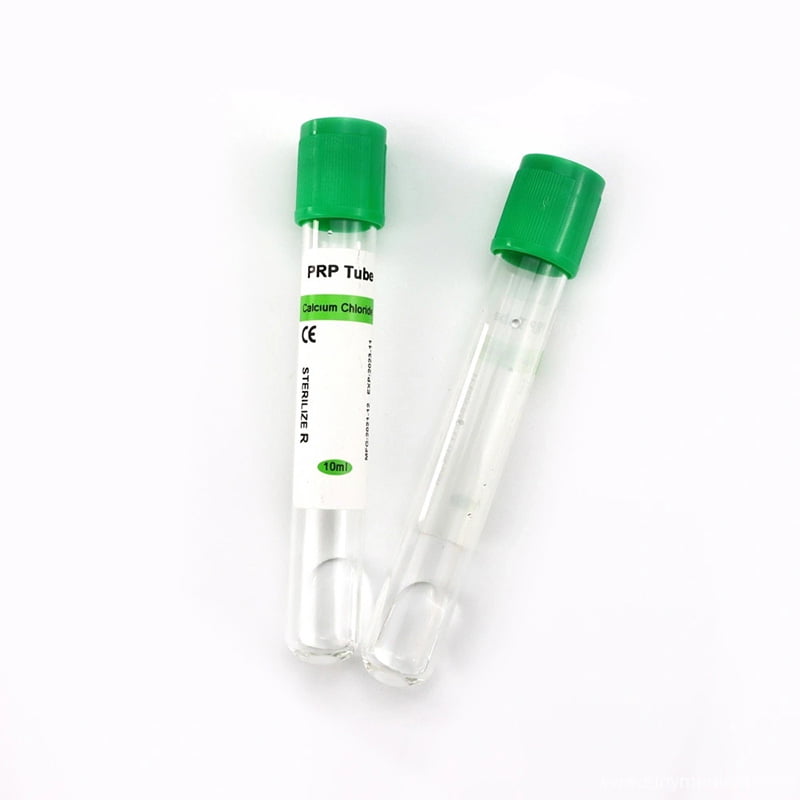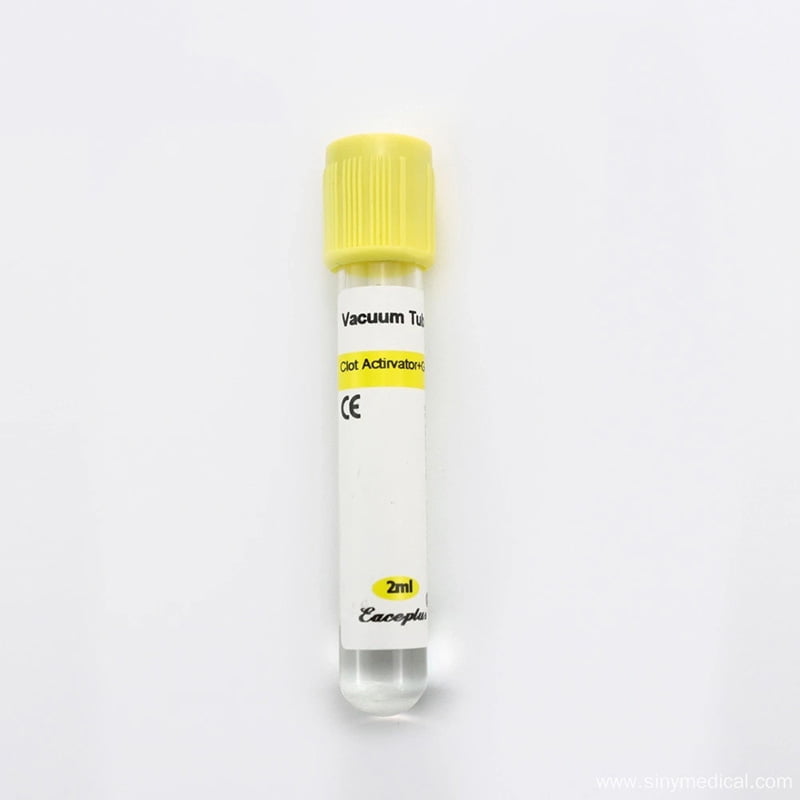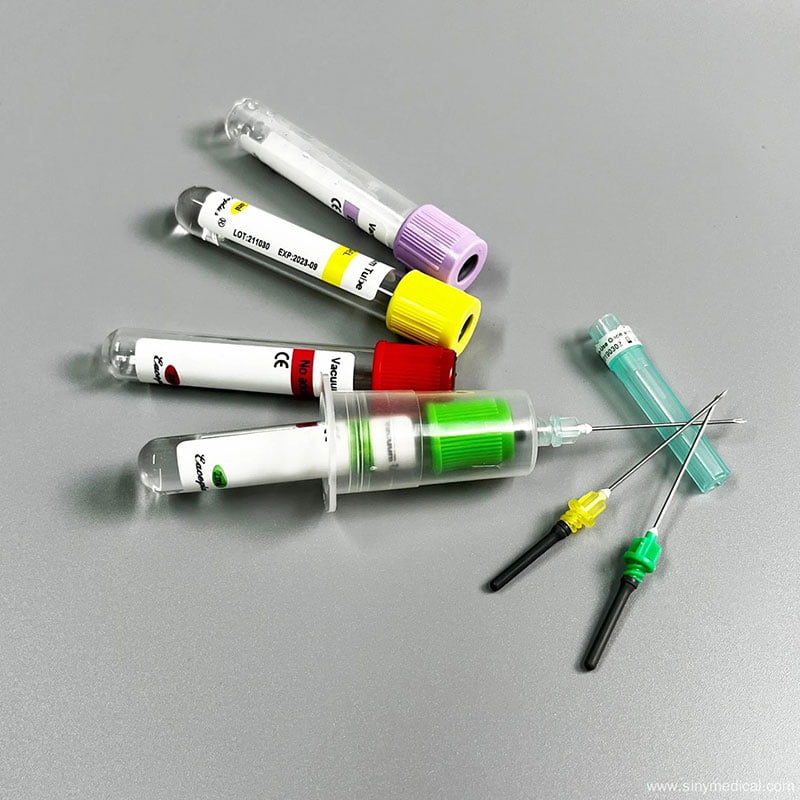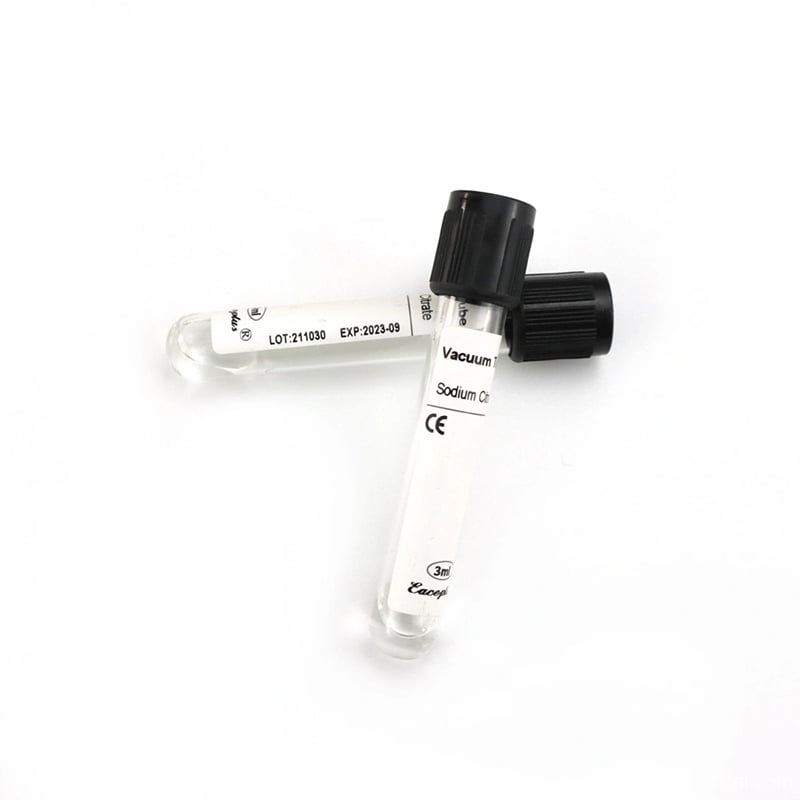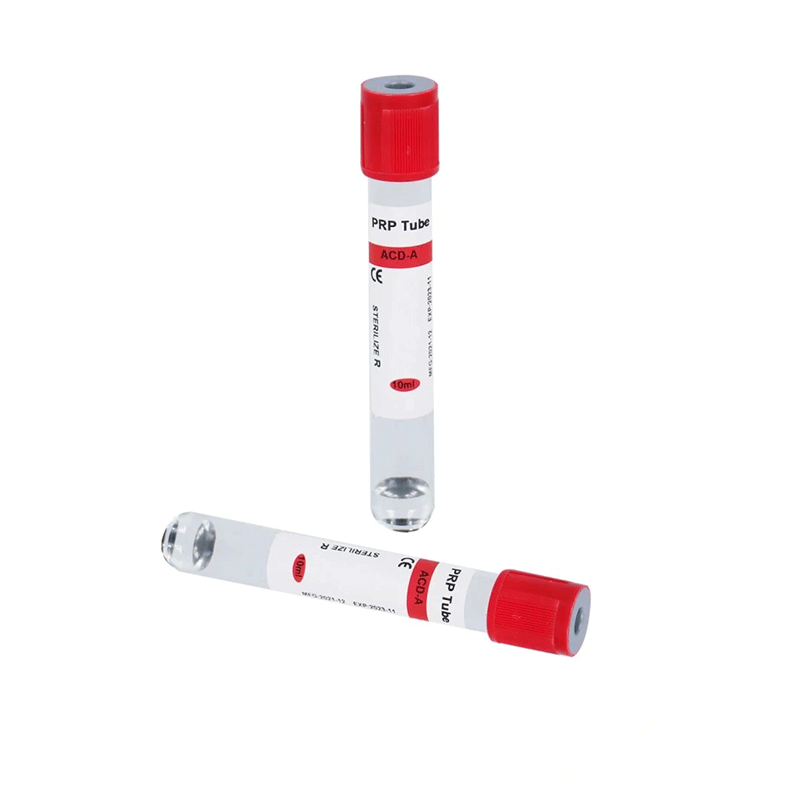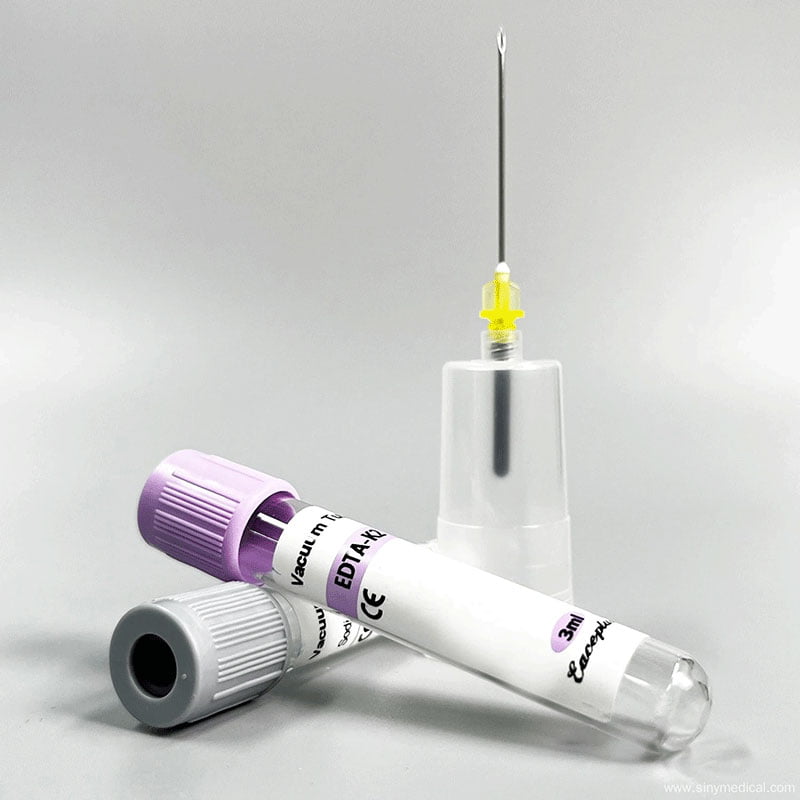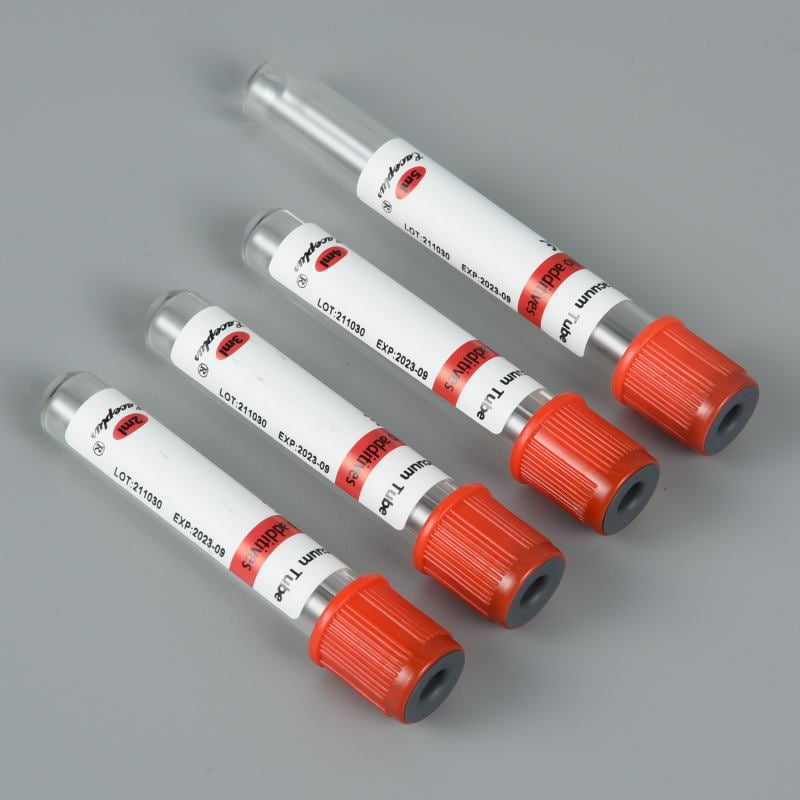A heparin tube is a vital component in medical laboratories and hospitals worldwide. Recognized by its green cap, this specialized vacuum blood collection tube prevents blood from clotting, ensuring reliable plasma samples for clinical tests. From routine chemistry panels to toxicology and specialized diagnostics, heparin blood collection tubes play a critical role in modern healthcare. In this comprehensive guide, we’ll dive into what a heparin tube is, how it works, its different types and sizes, the additives inside, and its real-world applications. We’ll also highlight high-quality options available from Siny Medical—a trusted manufacturer of medical consumables.
Table of Contents
- 1 What is a Heparin Tube?
- 2 How Does Heparin Work Inside the Tube?
- 3 Types of Heparin Tubes
- 4 The Use of Different Colors and Sizes of Heparin Tube
- 5 Applications of Heparin Tubes in Clinical Testing
- 6 Difference Between Heparin Tubes and Other Blood Collection Tubes
- 7 High-Quality Heparin Tubes from Siny Medical
- 8 Final Wrap-Up
- 9 FAQs
What is a Heparin Tube?
A heparin tube is a vacuum blood collection tube coated with heparin, an anticoagulant that prevents blood from clotting. These tubes are commonly used in clinical laboratories for tests that require plasma, such as chemistry and hematology analyses. Heparin tube are available in different sizes and colors, each designed for specific applications.
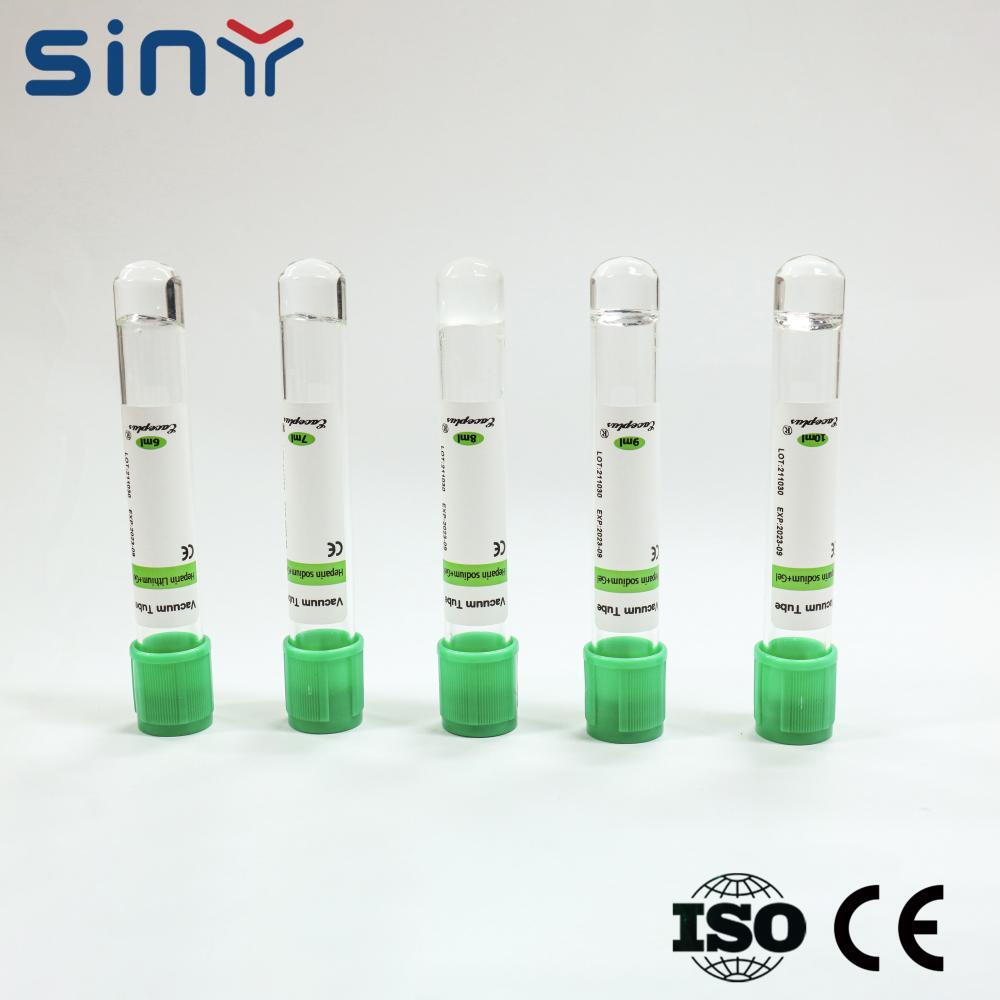
The heparin tube is a key component in blood collection, ensuring that samples remain viable for testing. Without heparin, blood would clot, rendering it unusable for many diagnostic procedures.
How Does Heparin Work Inside the Tube?
The science behind heparin is fascinating. Heparin is a naturally occurring anticoagulant that works by enhancing the activity of antithrombin III, a protein that inhibits clotting factors in the blood. Heparin binds to thrombin and other clotting factors in a blood sample, and it effectively halts the coagulation cascade.
This process ensures that the blood remains unclotted, allowing for the separation of plasma (the liquid portion of blood) from the cells. Plasma is then used for tests such as:
- Clinical chemistry assays
- Plasma electrolyte analysis
- Toxicology screening
- Blood gas studies
Because of this, heparin tube are often preferred over serum tubes when rapid results are needed.
Types of Heparin Tubes
Heparin tubes come in various types, primarily differentiated by the type of heparin used:
- Lithium Heparin Tubes: These tubes contain lithium heparin, which is suitable for a wide range of tests, including electrolyte analysis.
- Sodium Heparin Tubes: Laboratories often use these tubes with sodium heparin for specific tests like blood gas analysis.
Both types are effective anticoagulants, but the choice depends on the specific laboratory requirements.
The Use of Different Colors and Sizes of Heparin Tube
Heparin tubes are color-coded to indicate their purpose and additives. The most common color for heparin tube is green, which signifies the presence of heparin. Here’s a detailed table showcasing the different sizes and specifications of heparin tube:
| Volume/ml | Size/mm | Additive | Separator | Material | Cap Color | Closure |
|---|---|---|---|---|---|---|
| 2ml | 13X75 | Lithium Heparin / Sodium Heparin | Gel or Not Add | PET/GLASS | Green Top Tube | Safety Cap+Rubber or Rubber Stopper |
| 3ml | 13X75 | Lithium Heparin / Sodium Heparin | Gel or Not Add | PET/GLASS | Green Top Tube | Safety Cap+Rubber or Rubber Stopper |
| 4ml | 13X75 | Lithium Heparin / Sodium Heparin | Gel or Not Add | PET/GLASS | Green Top Tube | Safety Cap+Rubber or Rubber Stopper |
| 5ml | 13X75 | Lithium Heparin / Sodium Heparin | Gel or Not Add | PET/GLASS | Green Top Tube | Safety Cap+Rubber or Rubber Stopper |
| 6ml | 13X100 | Lithium Heparin / Sodium Heparin | Gel or Not Add | PET/GLASS | Green Top Tube | Safety Cap+Rubber or Rubber Stopper |
| 7ml | 13X100 | Lithium Heparin / Sodium Heparin | Gel or Not Add | PET/GLASS | Green Top Tube | Safety Cap+Rubber or Rubber Stopper |
| 8ml | 16X100 | Lithium Heparin / Sodium Heparin | Gel or Not Add | PET/GLASS | Green Top Tube | Safety Cap+Rubber or Rubber Stopper |
| 9ml | 16X100 | Lithium Heparin / Sodium Heparin | Gel or Not Add | PET/GLASS | Green Top Tube | Safety Cap+Rubber or Rubber Stopper |
| 10ml | 16X100 | Lithium Heparin / Sodium Heparin | Gel or Not Add | PET/GLASS | Green Top Tube | Safety Cap+Rubber or Rubber Stopper |
For customized vacuum blood collection tubes, feel free to contact Siny Medical.
Applications of Heparin Tubes in Clinical Testing
Heparin tubes are versatile and widely used in different areas of healthcare:
- Clinical Chemistry: Plasma electrolyte, protein, enzyme, and hormone testing.
- Blood Gas Analysis: Ideal for arterial blood gas studies due to rapid plasma preparation.
- Toxicology: Used in drug and toxic substance screening.
- Emergency Testing: Heparin tubes deliver faster turnaround than serum tubes when labs need urgent results.
For healthcare professionals, using the right tube is critical to ensuring accurate test results. That’s why many rely on high-quality products like the 8ml Heparin Sodium Gel Vacuum Tube.
Difference Between Heparin Tubes and Other Blood Collection Tubes
It’s easy to get confused between tube types, so here’s how heparin tubes differ from others:
- Heparin Tube (Green Top): Contains heparin, prevents clotting, used for plasma.
- Serum Tube (Red or Yellow Top): No anticoagulant, allows clotting, used for serum analysis. More details on Siny Medical Serum Tubes.
- EDTA Tube (Purple Top): Contains EDTA, used for hematology tests.
- Citrate Tube (Blue Top): Contains sodium citrate, used for coagulation studies.
Each type has its specific role, and selecting the right one is key to ensuring reliable results.
High-Quality Heparin Tubes from Siny Medical
When it comes to choosing the right tubes, quality matters. Siny Medical offers a wide range of heparin tubes that are trusted worldwide. Explore their full range here:
You can also check out their YouTube channel at Siny Medical YouTube or their Made-in-China listing.
Final Wrap-Up
To sum it up, a heparin tube is a critical tool for modern diagnostics, ensuring accurate plasma-based testing while preventing clot formation. Whether you need sodium heparin tubes for specialized studies or lithium heparin tubes for routine plasma testing, these green-top tubes are indispensable in labs worldwide.
If you’re looking for reliable and high-quality heparin tube, Siny Medical offers a comprehensive selection that meets international standards. From basic heparin blood collection tubes to advanced gel separator tubes, they’ve got you covered.
👉 Want to discuss customized options? Contact Siny Medical today.
FAQs
Why is the heparin tube cap green?
Because the color coding system in laboratories assigns green tops to heparin tubes, making it easy to distinguish them from serum or EDTA tubes.
What tests require heparin tubes?
Laboratories mainly use them for clinical chemistry, plasma electrolytes, toxicology, and urgent lab testing.
Can heparin tubes be used for hematology tests?
No. Hematology requires EDTA tubes, as EDTA better preserves cellular morphology.
How long is a sample stable in a heparin tube?
Generally, plasma in heparin tubes is stable for up to 48 hours under proper storage conditions.

